Philadelphia’s Cherry Street Pier this weekend once again became the stage for the sixth annual two-day festival, We Are the Seeds Philly, organized by the We Are the Seeds of CultureTrust.
Founded in 2016 by two Indigenous women, We Are the Seeds of CultureTrust is dedicated to elevating Native voices and Indigenous arts. The organization celebrates Indigenous people, fosters professional opportunities for Indigenous artists, and educates the public about contemporary Native culture.
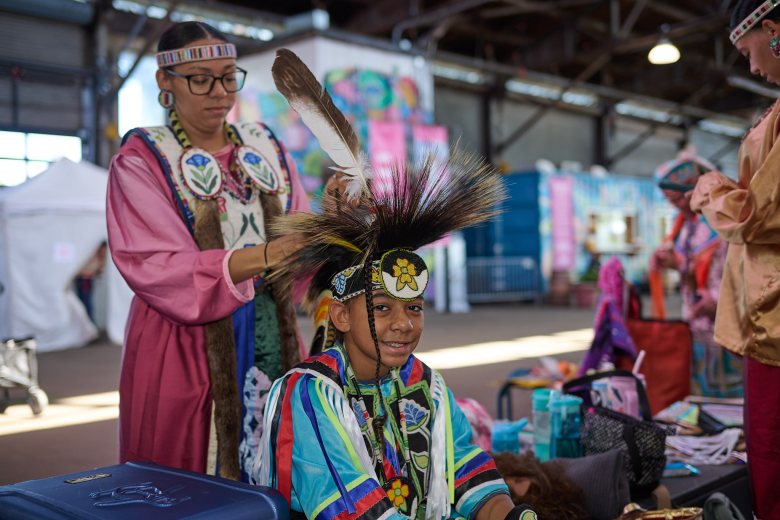 Powow preparations on Saturday. (Hanbit Kwon)
Powow preparations on Saturday. (Hanbit Kwon)
A primary mission of its annual gathering is to bring visibility to the Native communities within and around the Philadelphia region. In the words of Tailinh Agoyo, the group’s co-founder and director: “Whenever I talk to people and I tell them about Seeds, people usually say, ‘I don’t know much about Natives in Philly.’ And I say, ‘Well, we’re here!’
“If you have a place every year and everyone knows that it’s a place to come and gather, then it becomes a recognition and an understanding that we’re here.”
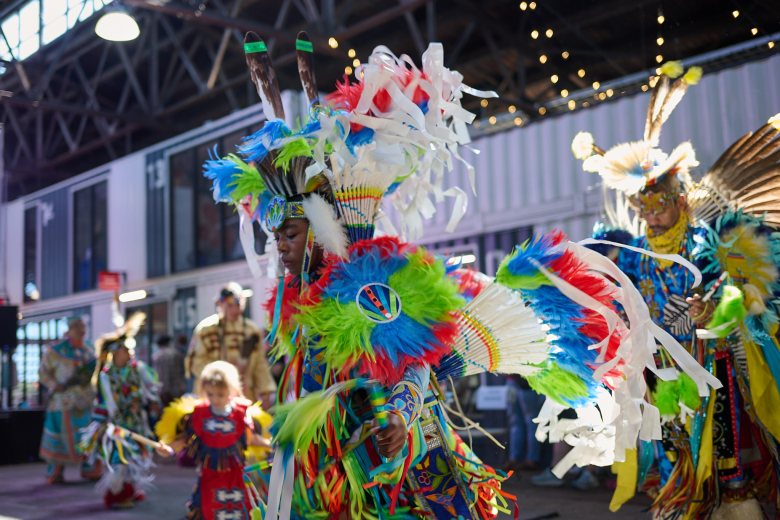 ”Men’s Fancy Dance” was one category on display at the Powwow. (Hanbit Kwon)
”Men’s Fancy Dance” was one category on display at the Powwow. (Hanbit Kwon)
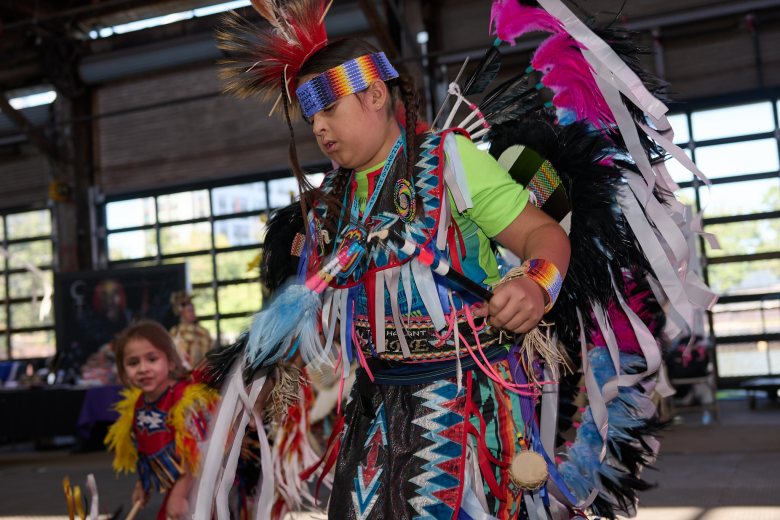 Dancers of all ages took the stage. Pictured here are two young dancers from the Men’s Fancy Dance category. (Hanbit Kwon)
Dancers of all ages took the stage. Pictured here are two young dancers from the Men’s Fancy Dance category. (Hanbit Kwon)
On Lenape Land
Cherry Street Pier is a year-round public venue housed within the shell of a historic municipal pier that connects Philadelphia’s creative future with its industrial past. Spanning 65,000 square feet, the pier was once a hub in the city’s shipping industry and still retains many of its original architectural features.
Long before the pier was built, this stretch of the Delaware River was home to the Lenape people, the original stewards of the land. The river and its banks were central to their communities for fishing, trade and cultural practices. Nearby Penn Treaty Park commemorates the site where William Penn and Chief Tamanend are believed to have signed the Treaty of Shackamaxon under a great elm tree.
Reflecting on this broader impact, Agoyo said in an email: “Seeds Philly reclaims space in a city that has historically overlooked contemporary Native peoples, making Indigenous presence visible and celebrated. In a place where Indigenous stories are often relegated to the past, our celebration is a strong reminder that Native peoples are here now, living and thriving, and an important part of what makes Philadelphia vibrant today.”
A welcome
The two-day event opened with a welcome from Agoyo, who has produced more than 175 public programs, including From Here, With a View: A ‘We Are the Seeds Philadelphia’ Podcast. Her work reflects her personal and organizational commitment to storytelling and cultural preservation.
Following Agoyo’s welcoming remarks, John Block, a member of the Bear Clan of the Seneca Nation and emcee for the day, took to the mic, providing context and commentary for the performances that followed during the Powwow celebration. A Seneca language teacher at the Faithkeeper Montessori Language Nest School, in Steamburg, N.Y., Block has long shared Seneca songs, dances and culture across the country.
Powwow grand entry
At noon, a Powwow opened the weekend with a powerful Grand Entry, as dancers in full regalia moved into the space to the sound of drums and song. The ceremony set the tone for the day, blending centuries-old traditions with a contemporary celebration of community. The powwow celebration drew participants from over 40 Tribal Nations, whose dance, music, art and craftsmanship highlighted the resilience and richness of Indigenous cultures.
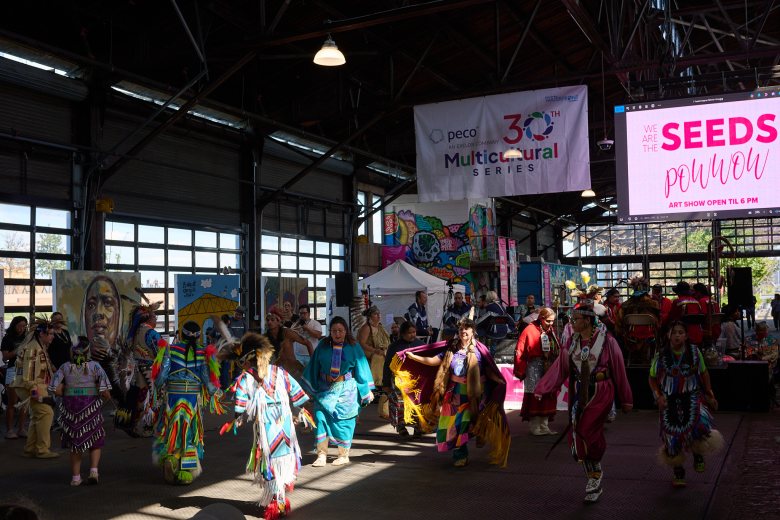 The Grand Entry kicked off the Powwow Saturday during the sixth annual We Are the Seeds Philly celebration. (Hanbit Kwon)
The Grand Entry kicked off the Powwow Saturday during the sixth annual We Are the Seeds Philly celebration. (Hanbit Kwon)
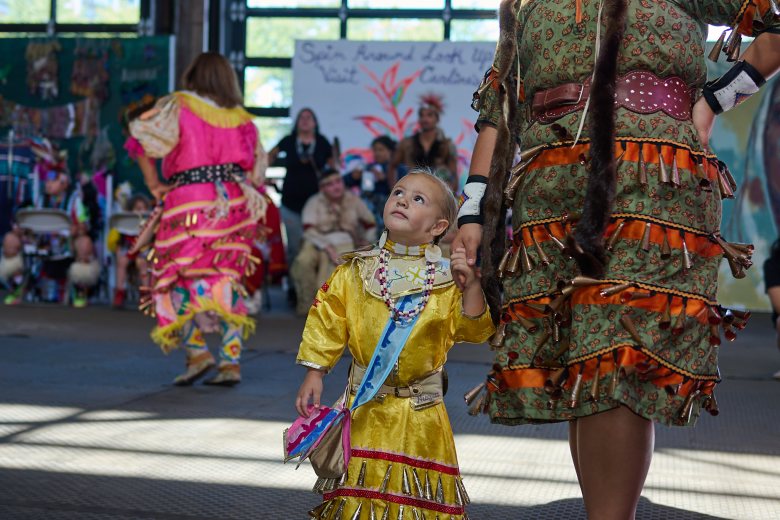 A young dancer wearing a Jingle Dress looks up towards an elder. (Hanbit Kwon)
A young dancer wearing a Jingle Dress looks up towards an elder. (Hanbit Kwon)
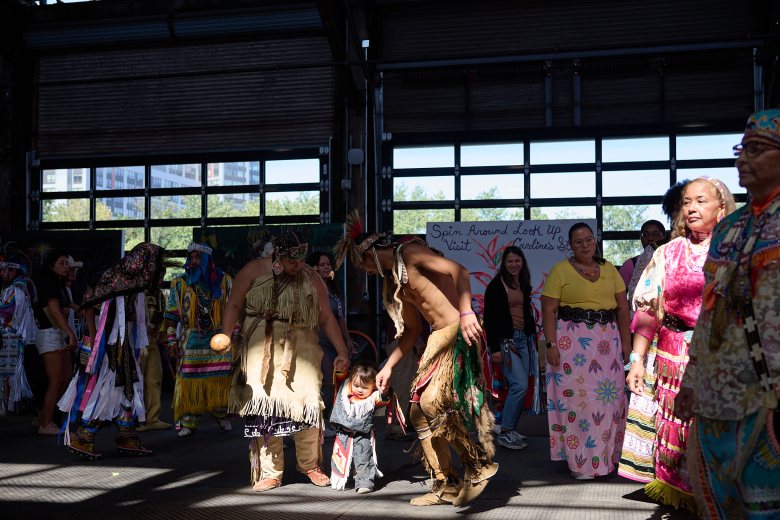 Dancers of all ages shared the stage together. (Hanbit Kwon)
Dancers of all ages shared the stage together. (Hanbit Kwon)
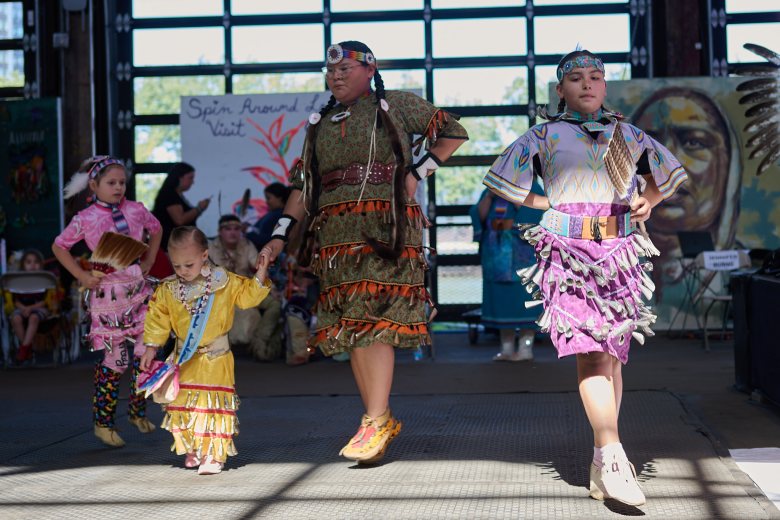 Ladies’ Jingle Dress Dancers. The jingle dress originated from the Ojibwe. (Hanbit Kwon)
Ladies’ Jingle Dress Dancers. The jingle dress originated from the Ojibwe. (Hanbit Kwon)
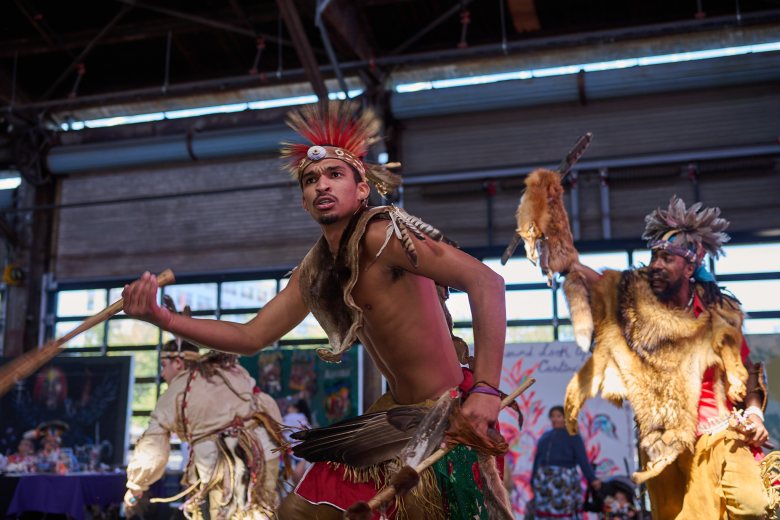 Seneca Spears (Narragansett) was the head male dancer at We Are the Seeds Philly. (Hanbit Kwon)
Seneca Spears (Narragansett) was the head male dancer at We Are the Seeds Philly. (Hanbit Kwon)
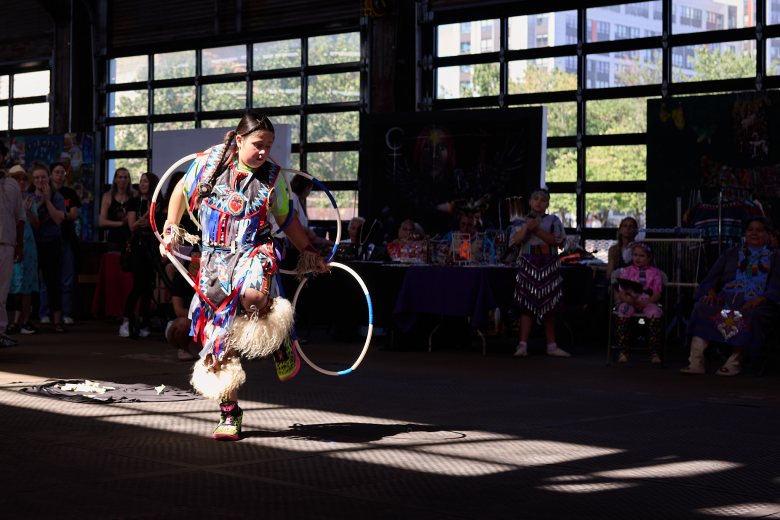 A hoop dance is traditionally a medicine dance. (Hanbit Kwon)
A hoop dance is traditionally a medicine dance. (Hanbit Kwon)
Throughout the afternoon, performers filled the stage and the dance circle. Intertribal dances, dances honoring Philadelphia Indigenous leaders, and a hoop dance offered layers of cultural storytelling. Social dances encouraged participation from event attendees, bridging the gap between performers and the audience.
Makers and market
Interactive opportunities enriched the weekend and again invited interactive visitor experiences. Featured events included corn husk doll-making with Dawn Spears, live painting with Priscilla Bell Lamberty, conversations with actor Gregory Cruz, and short film screenings from the organization’s podcast.
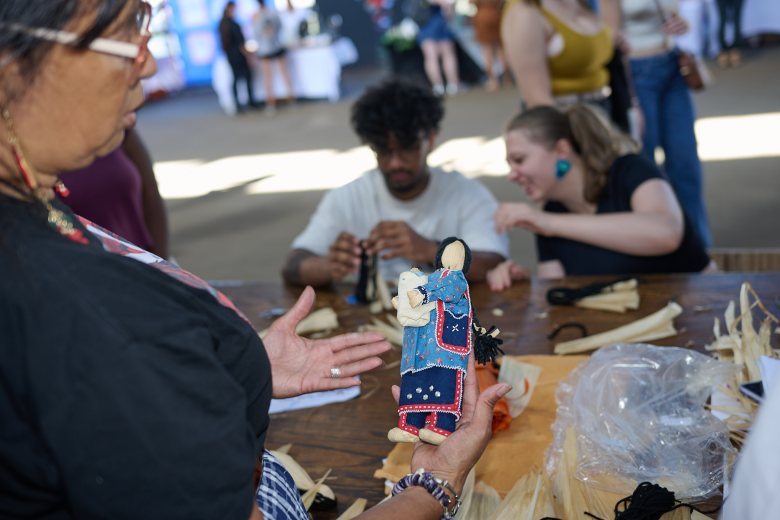 The corn husk doll-making workshop with Dawn Spears was a popular offering. (Hanbit Kwon)
The corn husk doll-making workshop with Dawn Spears was a popular offering. (Hanbit Kwon)
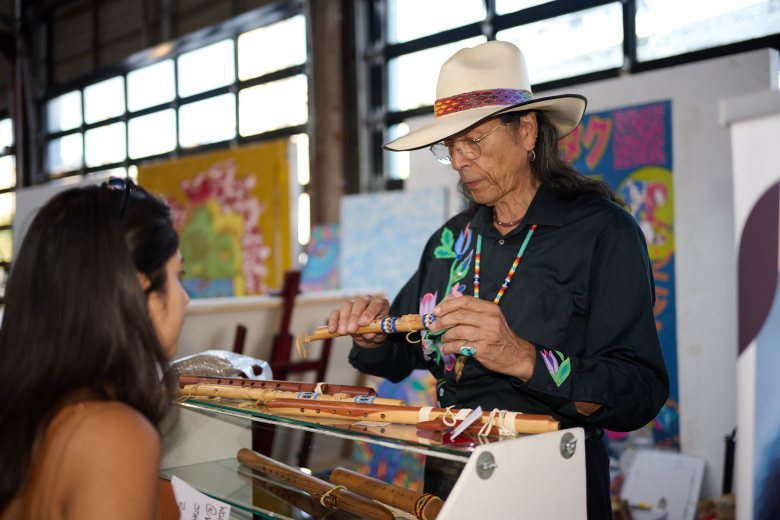 Tchin, a silversmith, musician, folklorist and painter, displays a handmade flute for sale. (Hanbit Kwon)
Tchin, a silversmith, musician, folklorist and painter, displays a handmade flute for sale. (Hanbit Kwon)
Beyond the workshops and performances, Cherry Street Pier buzzed with authentic Indigenous art and jewelry. Artists shared their craft and the stories behind each piece, bringing the organization’s mission to life. “We coordinate with dancers, drum groups, and artists from across the U.S. and Canada,” Agoyo shared in an email. “We handle travel, accommodations, cultural protocols, and hospitality to ensure participants are supported and traditions upheld.”
It’s not just the artisans. We Are the Seeds covers travel and lodging costs for visiting artists/makers, dancers, drummers and singers and also offers compensation, ensuring that the communities highlighted during this event are also supported by it.
The vibrancy of this gathering and the community that came together to co-create it underscores that We Are the Seeds is not only about education and preservation, it also upholds shared values of mentorship, community connection and social support.
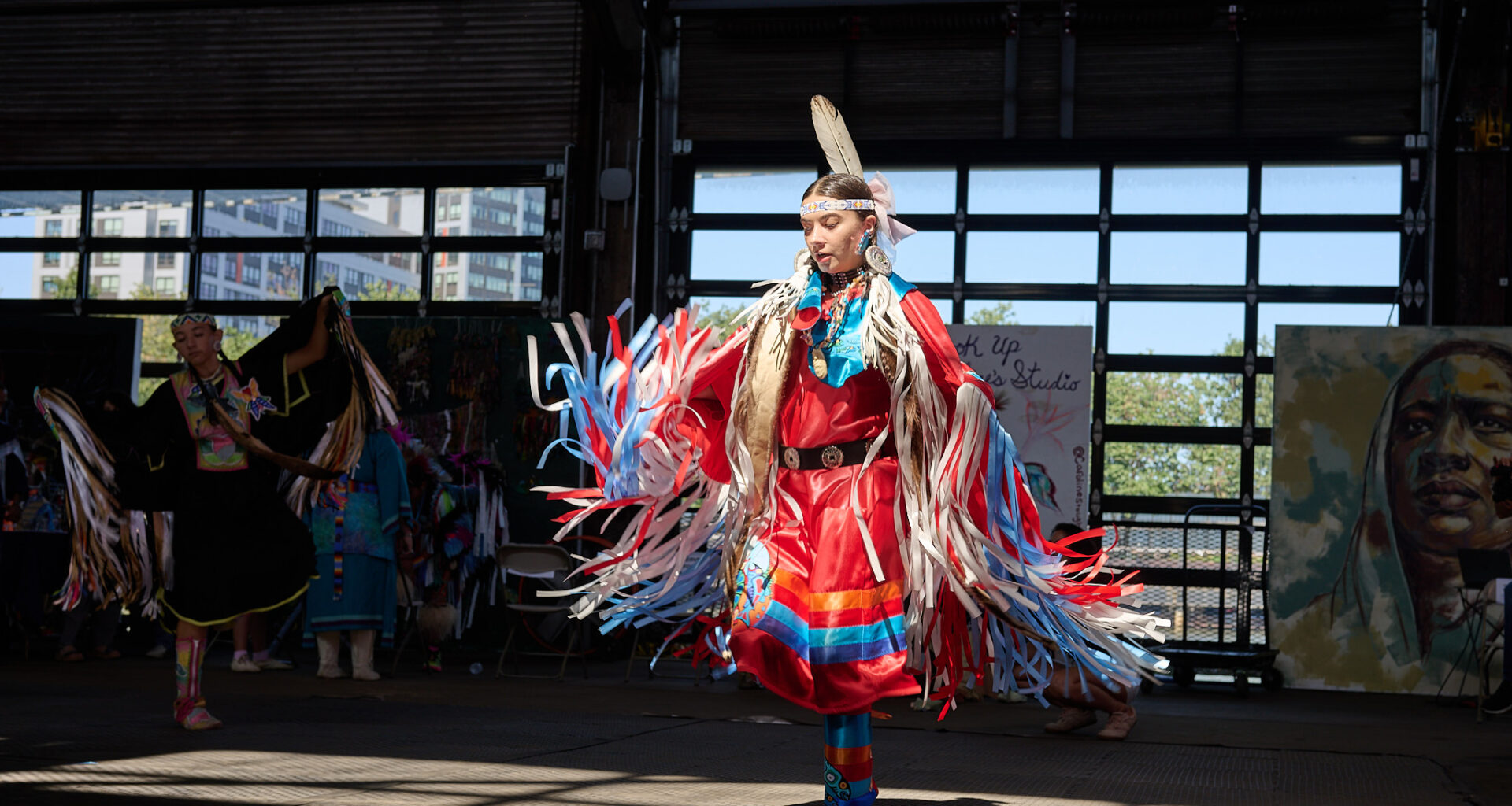
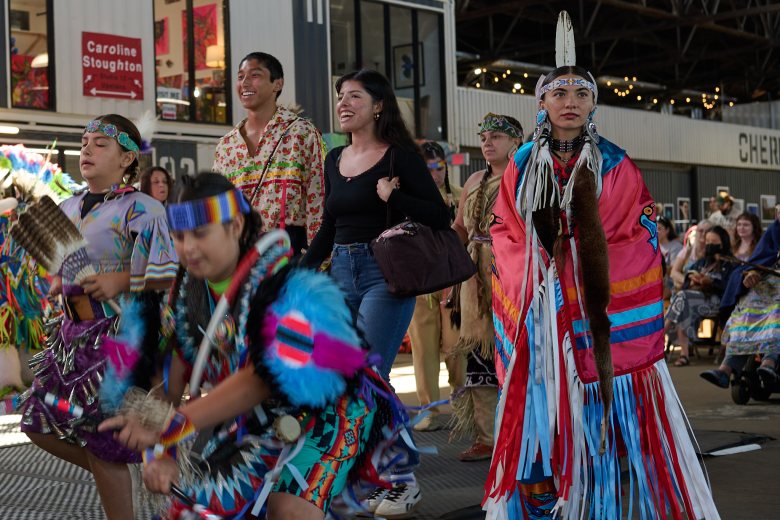 Social dances invited audience members to join the dancers on stage. (Hanbit Kwon)
Social dances invited audience members to join the dancers on stage. (Hanbit Kwon)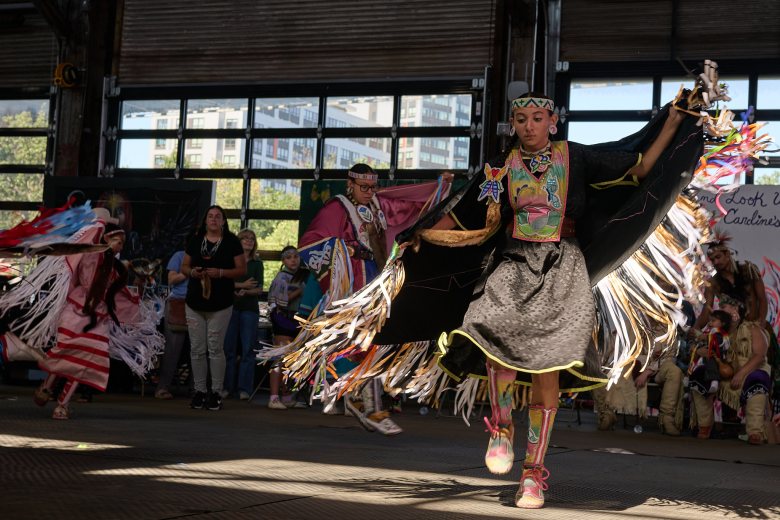 A traditional blanket dance. (Hanbit Kwon)
A traditional blanket dance. (Hanbit Kwon)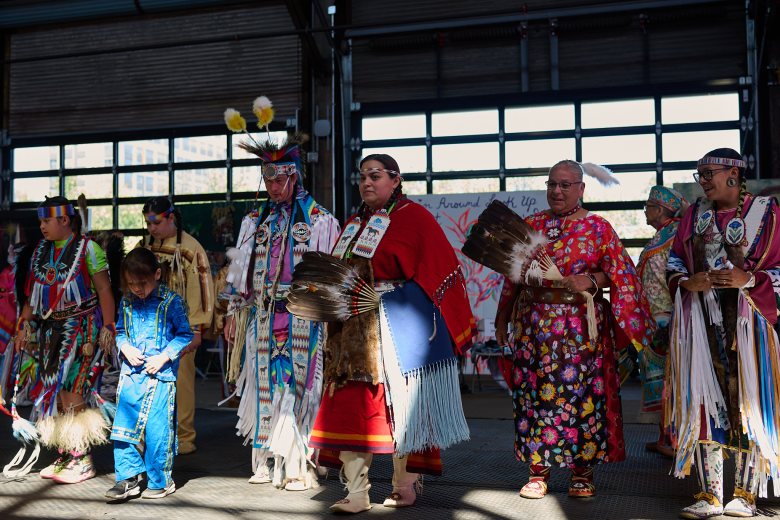 The stage was a joyful meeting place for dancers from many different traditions and backgrounds. (Hanbit Kwon)
The stage was a joyful meeting place for dancers from many different traditions and backgrounds. (Hanbit Kwon)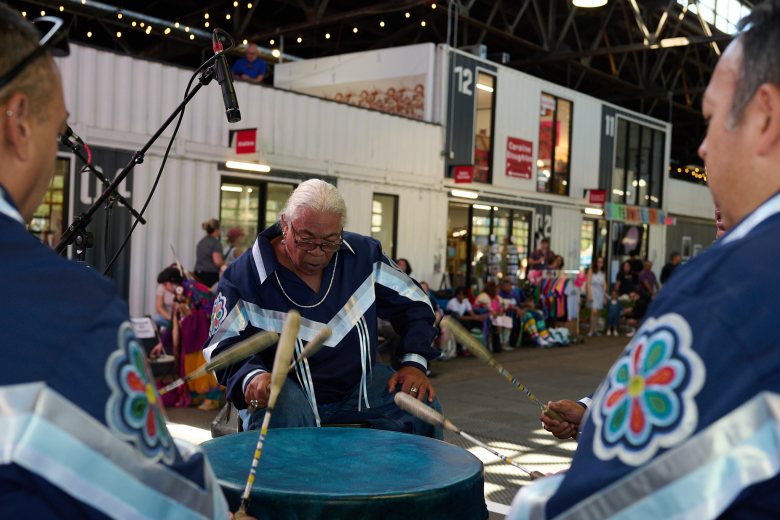 The Silvercloud Singers were one of two groups who kept the beat during the Powwow. (Hanbit Kwon)
The Silvercloud Singers were one of two groups who kept the beat during the Powwow. (Hanbit Kwon)